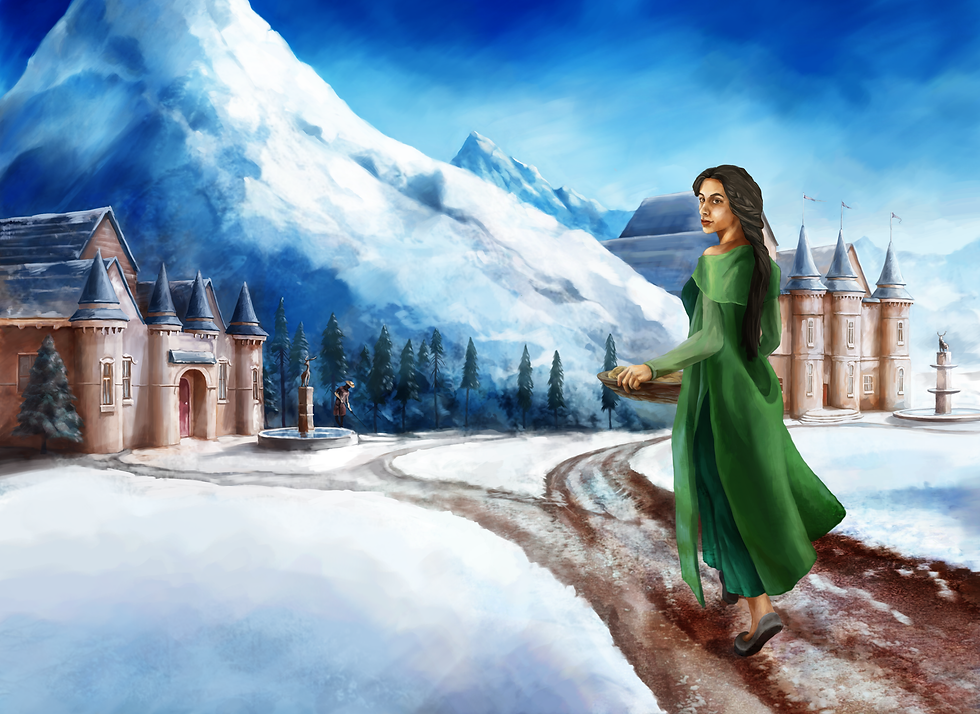Damaging social standards of beauty
- astrid v.j.

- Jun 18, 2019
- 4 min read
Elisabeth, the main character in Elisabeth and Edvard - The Siblings’ Tale, does not match the standards of beauty of her society. She is certainly a member of the majority ethnicity in her country, but her looks don’t match what she has been taught about beauty.

With the epidemic of self harm that characterises young women in our society, it may be time to begin seriously talking about the toll our beauty standards are taking on those who don’t match the standard. The current, Western beauty standard has locked onto the look of white women at their peak fertility and in perfect health. This marginalises teenagers, middle-aged and older women, as well as non-white women, not to mention anyone who is overweight or ill.
I consider that disturbing, to say the least. I noticed this as a teenager. I hated my knees, my long face, my pudgy body which tended toward overweight (but never unhealthily so). My teeth were too large, I had acne and on top of it all. As though disliking my own looks wasn’t enough, I wasn’t “cool” and was ostracised from any of the girl cliques at school. Now, in the long run, this was a good thing, not fitting in has proven to be something unique about me and something I now wear with pride, but it was a big burden to bear during my teen years.
In hindsight, I know I had it easy, there are young women who go through far more damaging teen years, destroying their bodies with eating disorders, or even practising other forms of self harm. I won’t deny I did contemplate suicide a few times, but never went so far as actually going through with it, while the suicide rates of young adults is rising tremendously, and recent studies show dissatisfaction with looks, as well as the feeling of not belonging, do contribute to the rise in depression spurning self harm which may end in suicide.
Since I was at school, the pressure on teenagers has increased many times over thanks to the technological revolution. Social media and young people’s inability to identify what beauty really is, as well as our society’s blasé approach to the very high beauty standards we enact using photoshop, make-up, special lighting and insane pressure in the modelling and acting businesses is costing us. We have rising numbers of teenage girls unhappy with what they look like turning to medical procedures to alter their bodies or hormones, or resorting to inhuman treatment of their own bodies, all to punish themselves or in the search of a way to attain that norm which is far out of reach from their underdeveloped physical forms.
I think it is time our society acknowledged that the standard of beauty we uphold, is limited to a very small moment in a woman’s life. We have a tendency to reach our peak beauty in our early to mid twenties, and the moment lasts a few years, if we’re lucky. Teenage girls’ bodies are still growing, changing. They are thinner, less voluptuous because their bodies are not yet at their optimum condition for childbearing (they can bear children, but physically it is not recommended they should). We have all heard the common phrase that a woman is physically most able to bear children in her twenties, while she is mentally ready in her thirties (there will always be exceptions, so let’s not get into that here).
What I really want, is for us to change the way we talk about beauty. Feminine beauty, the way it is represented in movies, magazines, television, advertising and on social media is limited to a very short period in a woman’s life. Some may mature earlier, and reach their peak beauty in their late teens, others may mature late, and only reach that peak in their late thirties, but the overwhelming majority of us are most beautiful around the age of 25. Because of this, I want to tell all you women under eighteen, be patient. Yes, it is tough. No one is saying it isn’t. All I want you to know, is there is every hope in the world. Irrespective of your ethnicity, you will be beautiful.
Our bodies change all the time, so we need to find other means of acknowledging the aesthetics of individuals who may not fit into the category “beautiful”. Can we give our youth a break, not to mention older women? Could we help them out, maybe, by reducing the pressure they feel? This is the reason why my protagonist, Elisabeth doesn’t fit our beauty aesthetic at all. I want to open a discussion to allow other aesthetics an opportunity to show themselves, for us to see other forms of beauty than the one dictated by our society. I can only hope, that girls who resonate with the quote below which is from Elisabeth’s story, will also be able to take a step back and be a little less harsh on themselves.
Elisabeth’s thoughts on her looks in Chapter 1 of Aspiring, Part 1 of the Siblings’ Tale:
“I could briefly make out my reflection in the glass of the window. My dark brown eyes were heavy from the long journey. Large cheeks, the bane of my existence, were the most prominent feature of my round face. I frowned at myself, it would just have to do.”
Thank you for reading. I would love to know what you think of this topic. Please leave a comment, and do subscribe to my newsletter to get my next blog post right in your inbox. You can subscribe here.








Comments